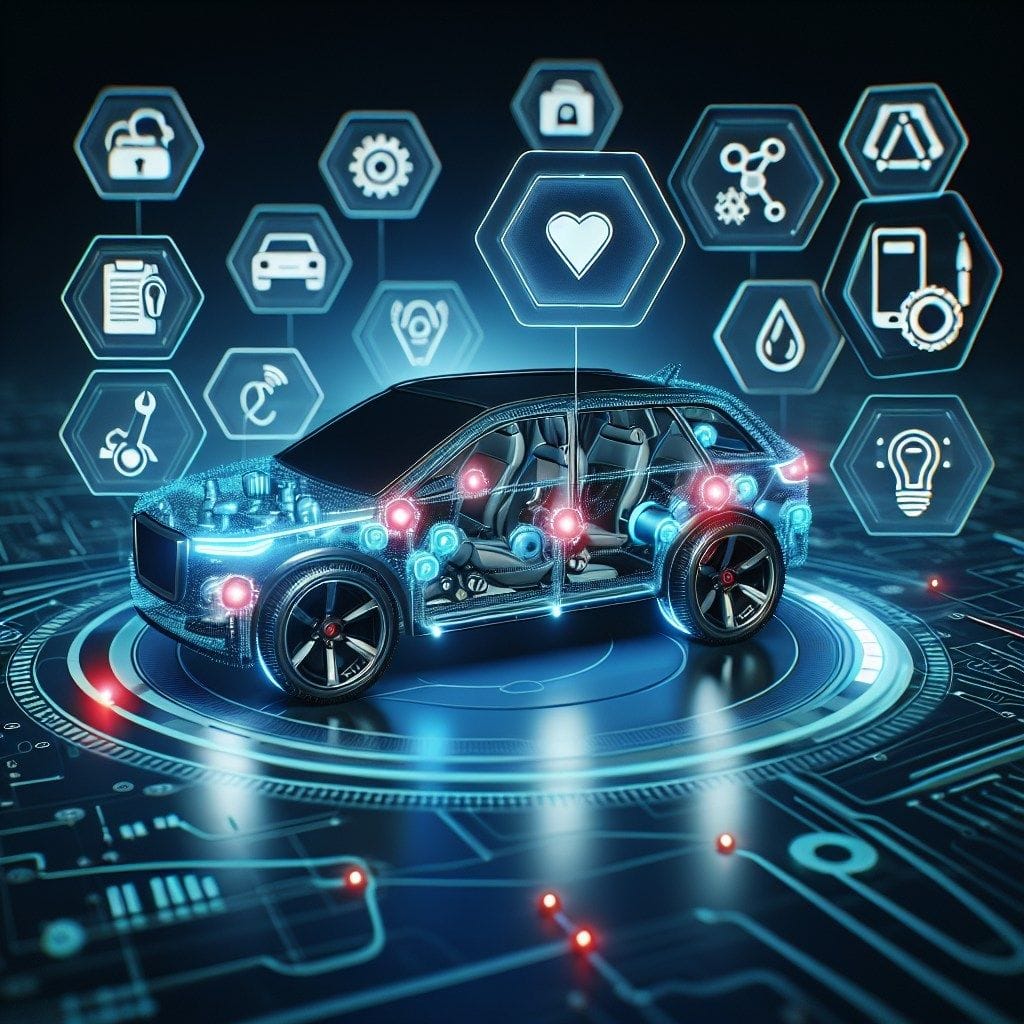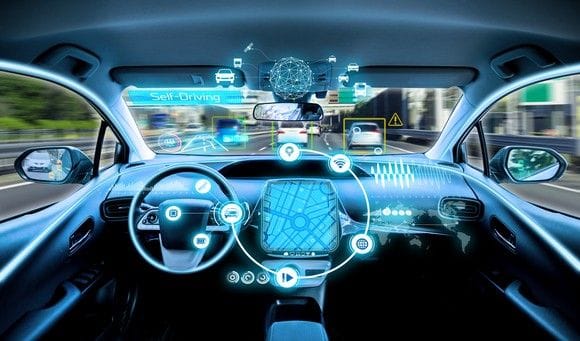Imagine stepping into a new car that not only drives smoothly but thinks with you, adjusting speed, detecting hazards, and connecting to your phone seamlessly. Welcome to the world of new car technology, where innovation meets intelligence. From automatic emergency braking to adaptive cruise control, today’s vehicles offer more than just transportation. They deliver a smarter, safer, and more exciting driving experience. Whether you love the thrill of tech or just want better safety systems, modern cars are built to impress.
Introduction to New Car Technology
New car technology is evolving rapidly in 2025, reshaping how we view vehicles, mobility, and innovation. Automakers are rolling out advanced tech features that focus on safety, performance, and connectivity. This new wave of automotive technology highlights a shift toward smarter, greener, and more user-friendly new vehicles.
Key Tech Features in the Latest Car Models
New car technology in 2025 includes advanced features that enhance both safety and comfort. From automatic emergency braking to infotainment systems synced with smartphones, these tech features are reshaping the driving experience. Many luxury cars now offer hands-free driving, adaptive headlights, and blind spot monitoring. Automakers like Toyota and Mercedes-Benz continue to innovate in vehicle safety, offering systems that automatically slow down when a car in front is detected. These features represent a turning point in the automotive revolution.
How 2025 Is Shaping the Automotive Industry
The year 2025 is defining a new era in the automotive industry. Many car manufacturers are focusing on electric vehicles (EVs), hybrid vehicles, and smarter driving systems. With stricter mandatory safety requirements for cars sold in the U.S. and cars sold in the EU, the push toward advanced safety features is accelerating. Automotive technology is no longer optional. It’s a competitive necessity. Vehicle innovation is driving sustainability, performance, and increased automation across the automotive sector.
Did you know that automatic emergency braking will become mandatory in all U.S. vehicles by 2029?
Why New Car Technology Improves the Driving Experience
Advanced automotive technology greatly improves the modern driving experience. Enhanced connectivity, real-time navigation, and self-driving capabilities reduce stress on the road. Advanced driver-assistance systems (ADAS) like forward collision warning and adaptive cruise control allow safer and smoother driving. Combined with refined brake systems and responsive steering wheels, these improvements make every new vehicle feel more intuitive, smarter, and safer.
Advancements in Driver-Assistance and Safety Systems

New developments in driver-assistance systems are redefining vehicle safety. From ADAS to emergency alerts, today’s automotive advancements are focused on preventing accidents and saving lives. These systems are now found in nearly every new car, providing extra layers of protection for both drivers and surrounding road users like pedestrians and cyclists.
Read about Social Media Marketing
Understanding Advanced Driver-Assistance Systems (ADAS)
Advanced driver-assistance systems (ADAS) are a set of technologies that support drivers with real-time decision-making. These systems rely on sensor integration to deliver features like lane-keeping assist and emergency braking. Found in nearly every new car, ADAS increases awareness and response time, helping reduce road accidents. They mark a major leap in vehicle safety and are now standard in cars sold in the EU and 2024 models globally.
Read about What is the purpose of technology
The Role of Automatic Emergency Braking and Forward Collision Warning
Automatic emergency braking and forward collision warning systems prevent crashes by identifying hazards before the driver reacts. These tools are especially helpful in city driving where a pedestrian or cyclist might appear suddenly. Many car manufacturers now include these as part of their new safety packages. Combined with toyota safety sense, these features reflect a growing commitment to proactive vehicle protection and safety technologies.
Did you know some self-driving cars use over 30 different sensors to detect surroundings in real time?
Rear Cross-Traffic Alert and Pedestrian Protection Features
Rear cross-traffic alert is vital in crowded urban areas where visibility is limited. It uses sensor data to detect approaching vehicles from behind while reversing. In parallel, pedestrian detection systems reduce accidents by triggering emergency braking when motion is detected in front of or behind the car. These features are part of the broader driver-assistance movement toward fully autonomous driving.
Smarter Driving Through Connectivity and Sensors

The rise of smart vehicle technologies is largely driven by advanced connectivity and precision sensors. These innovations are essential for both everyday convenience and the future of autonomous vehicles. They enable cars to think, communicate, and react in real time, making roads safer and driving more enjoyable.
How Connectivity Enhances Modern Vehicle Control
Connectivity has transformed how we interact with our vehicles. Modern cars now feature integrated infotainment systems that allow seamless access to music, maps, and calls via smartphones. Connected vehicle systems also enhance diagnostics, send maintenance alerts, and integrate with driving automation features. This connectivity improves both performance and safety and security.
Sensor Technology in Autonomous Vehicles and Driving Systems
Sensor technologies are at the core of autonomous vehicles and semi-automated driving systems. Using radar, cameras, and LiDAR, these advanced vehicle systems can interpret surroundings and make instant driving decisions. Whether it’s identifying a cyclist or adjusting to traffic speed, sensor data supports real-time vehicle intelligence. Self-driving cars rely heavily on these systems to maintain safety and stability.
Cyclist and Pedestrian Detection in Smart Cars
Modern automotive brands prioritize safety systems that protect vulnerable road users like the cyclist and pedestrian. Through AI-driven car technology and precise sensor placement, new vehicles can now detect movement around the car. If a person or object suddenly appears, emergency braking is triggered instantly. These tools are reshaping the future of driving assistance.
Did you know that connected cars generate up to 25 GB of data per hour during regular use?
EV Innovations and the Future of Automotive Tech
The future of automotive technology is electric. As EVs and hybrid electric vehicles rise in popularity, the industry is shifting its focus to sustainability and smart design. From energy-efficient brake systems to seamless connectivity, the road ahead is being shaped by innovation and automation.
The Rise of EVs in the 2025 Automotive Market
In 2025, EVs will dominate the automotive world, with growing demand for electric power and sustainable car manufacturing. Governments are encouraging electric cars through incentives and updated safety requirements for cars sold. Both hybrid electric and fully electric vehicles offer quiet operation, fewer emissions, and advanced tech features that enhance value and efficiency.
Adaptive Cruise Control and Eco-Friendly Driving
Adaptive cruise control is a core feature in both traditional and EV models. It adjusts vehicle speed to maintain safe distance and improve fuel economy. Combined with driving systems that optimize routes and braking patterns, it supports a smoother, greener driving experience. Toyota and other automakers are enhancing this feature in their 2024 and 2025 models.
The Future of Brake Systems in Electric and Autonomous Vehicles
In electric and autonomous vehicles, brake systems are more intelligent and energy-efficient. Regenerative braking converts energy into power for the vehicle, extending battery life. This technology is a key part of the transition to self-driving and fully connected automotive technology. As innovation continues, car manufacturers will redefine how braking works across all vehicle types.
Frequently Asked Questions about New Car Technology
What are the latest technologies in new cars?
New cars now include driving automation, advanced driver-assistance, AI-based safety systems, and connected car platforms using real-time data analytics.
What is the next big thing in automotive?
The future of automotive lies in full autonomous driving, vehicle-to-everything (V2X) communication, and integration of AI in vehicle safety technologies.
do new cars have internet?
Yes, most new vehicles feature built-in connectivity through 4G/5G, supporting connected services, OTA updates, and infotainment system upgrades.
can you buy a new car without technology?
Today, it’s rare to find a new car without tech features. Even basic models include driver-assistance tools and smart sensor integration.
So, are you ready to experience the future on four wheels? As vehicle innovation accelerates, every new model brings us closer to fully autonomous driving and eco-smart efficiency. Whether you’re eyeing an EV or exploring advanced tech features, now’s the perfect time to explore what modern automotive technology can do. Share your favorite new car feature. Are you all about connectivity, or does emergency braking win your heart?
Read about MOVEit Data Breach